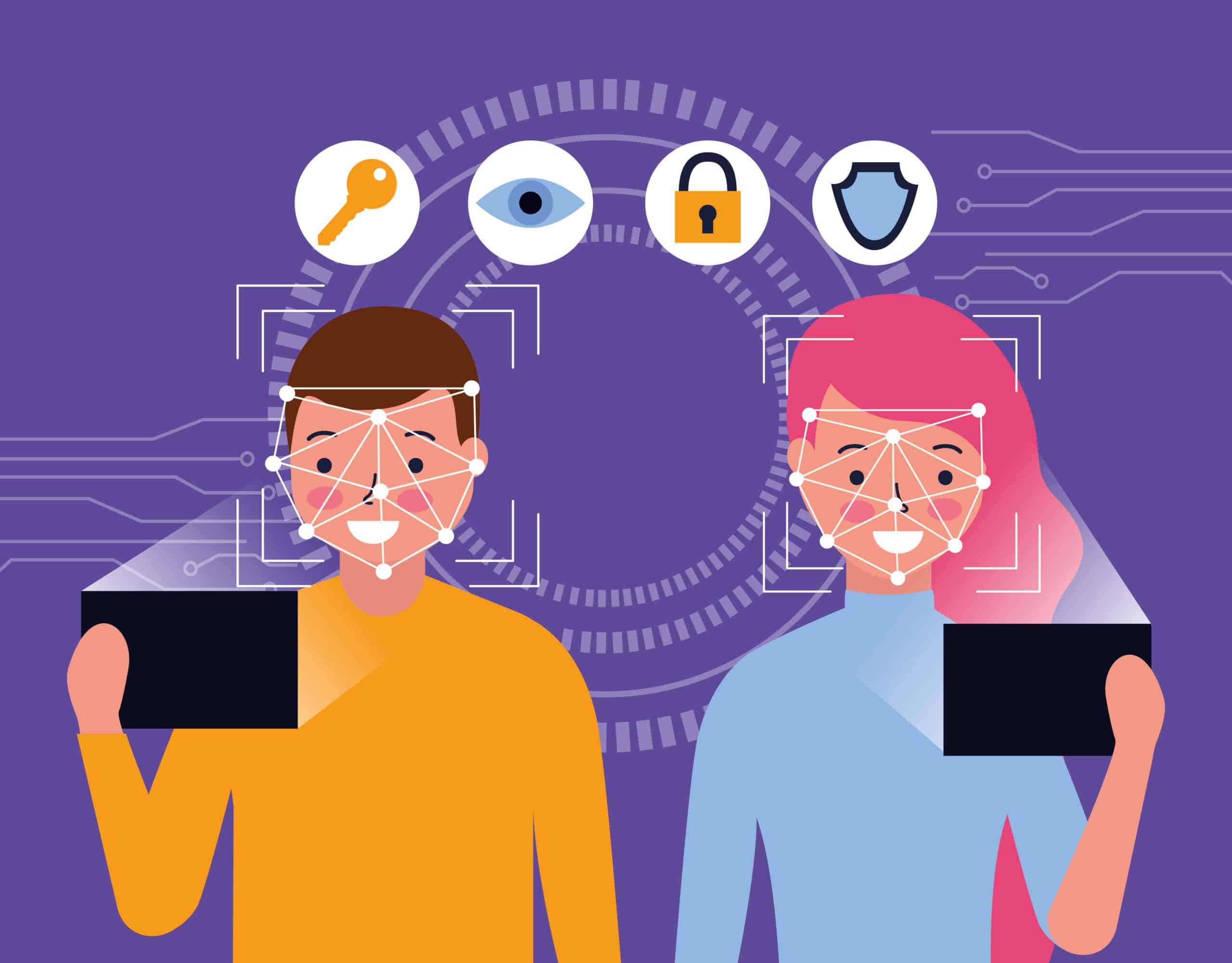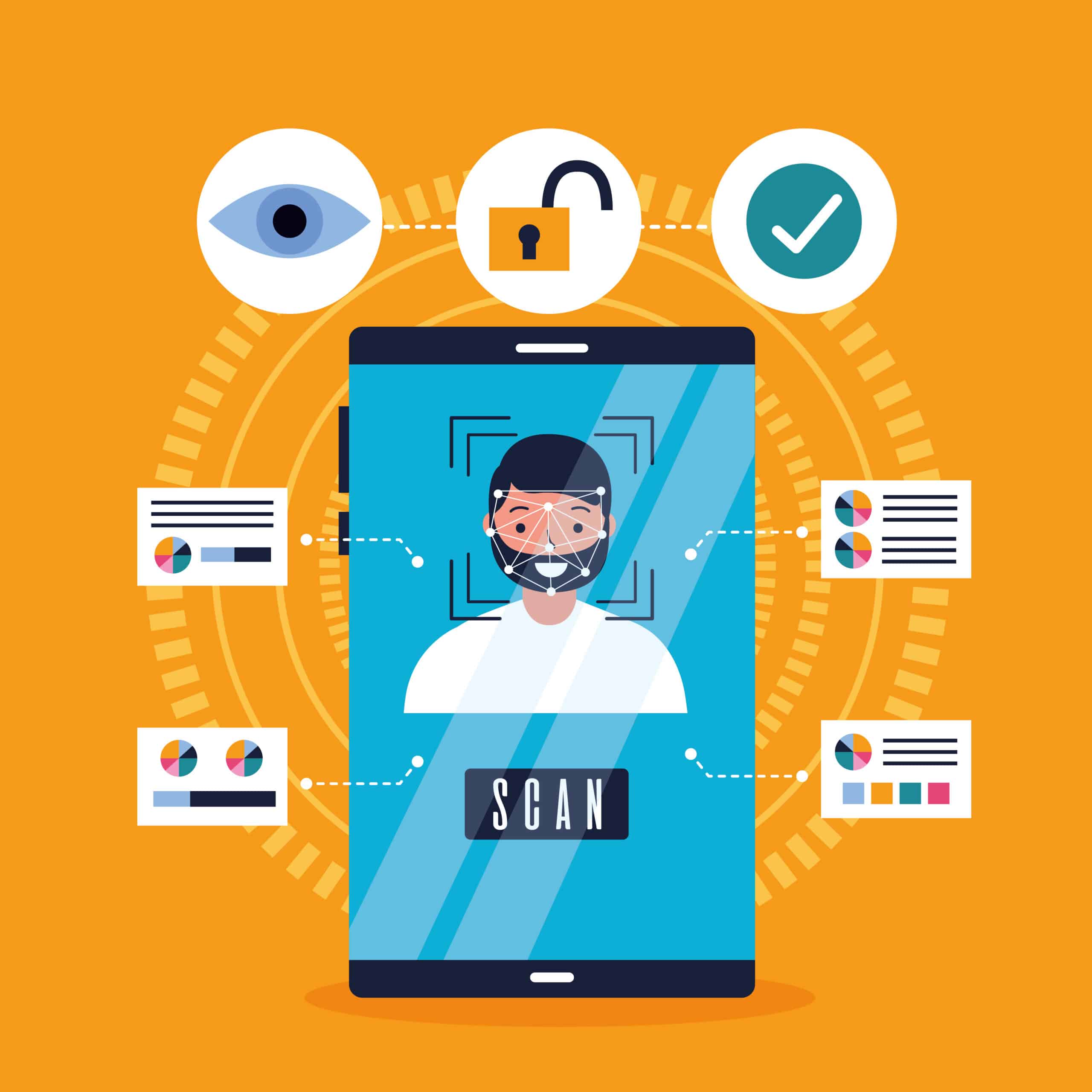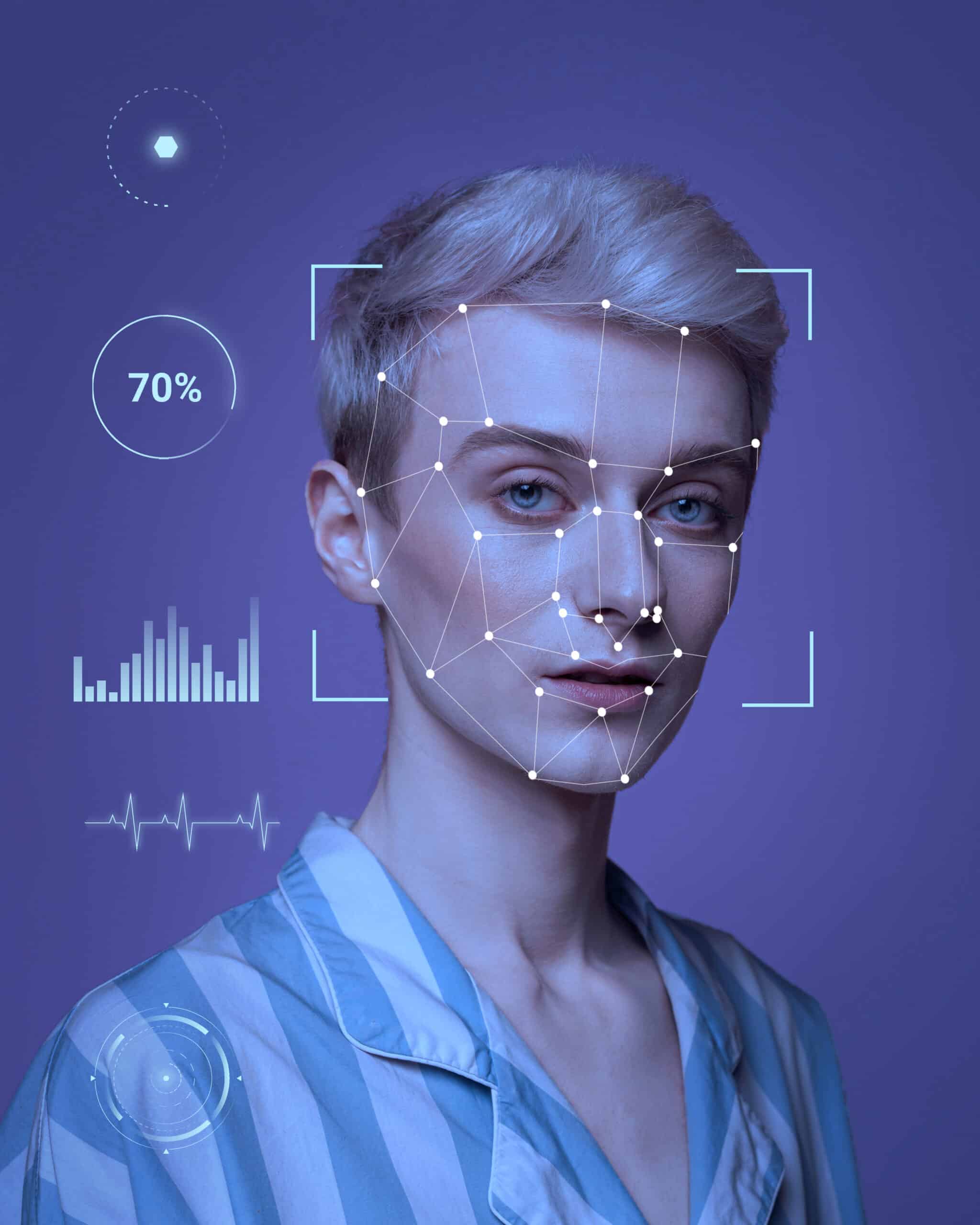Revolutionizing Identity Verification: Facial Recognition Solutions
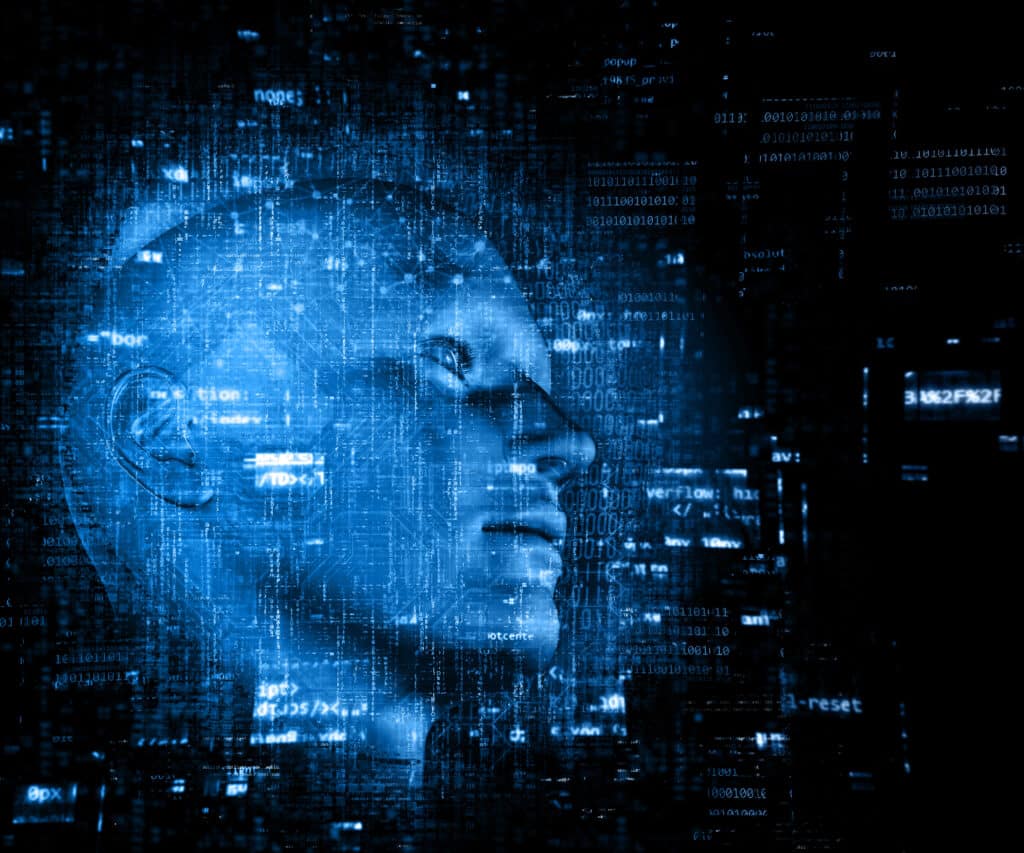
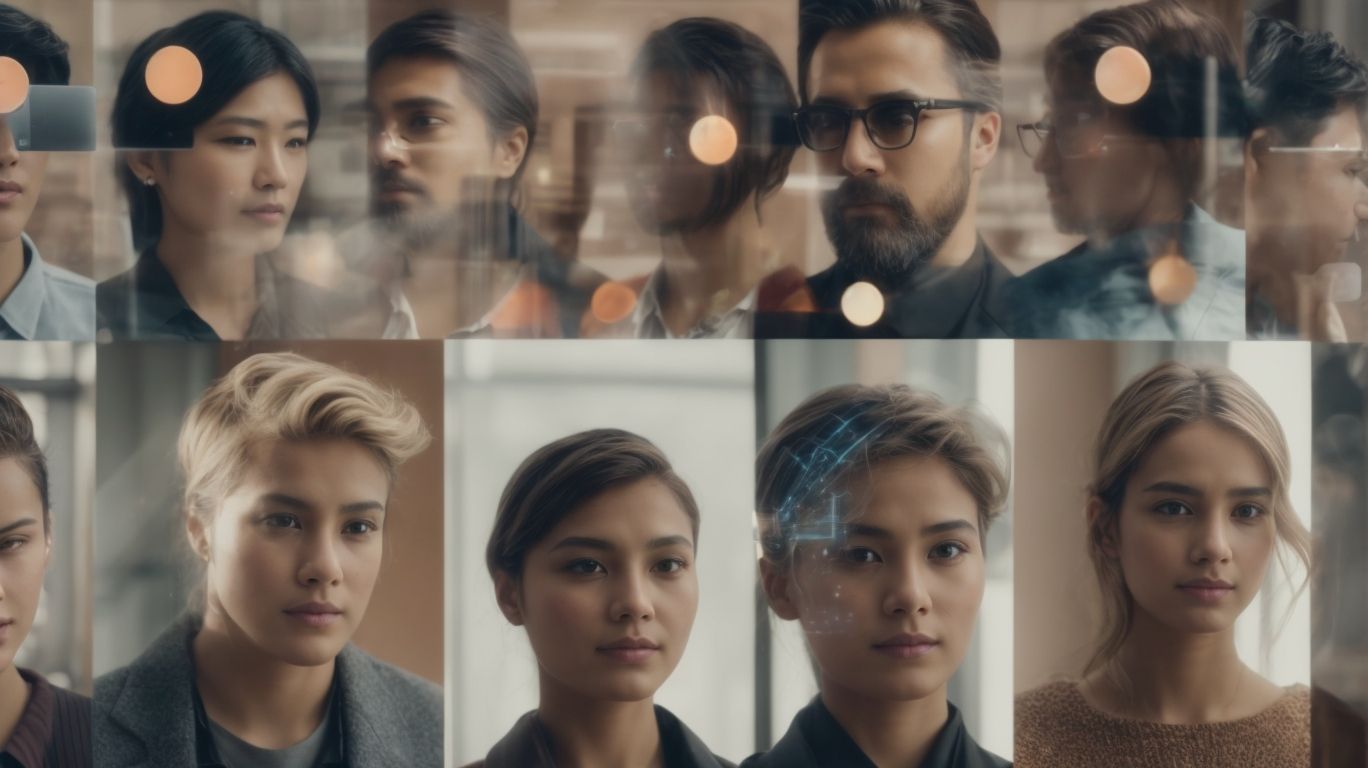
As technology continues to advance, the way we verify our identities is also evolving. From traditional methods like knowledge-based authentication and biometric verification to more cutting-edge solutions like facial recognition, the landscape of identity verification is constantly changing. Understand facial ID recognition innovations.
We will explore the world of facial recognition technology – how it works, its advantages, concerns surrounding its use, different types of solutions available, and how it is being utilized across various industries.
Join us as we delve into the innovative world of facial recognition solutions and the future of identity verification.
What Is Identity Verification?
Identity verification is the process of ensuring that an individual is who they claim to be. It involves authenticating the identity of a person to establish trust and security in various online and offline interactions.
Identity verification plays a crucial role in mitigating risks associated with identity theft, fraud, and unauthorized access to sensitive information. By verifying one’s identity accurately, organizations can safeguard their systems, data, and financial transactions.
Security measures commonly use authentication methods like biometrics, two-factor authentication, and knowledge-based questions to enhance security. These methods not only validate identity but also help in creating a seamless user experience by reducing the chances of breaches and unauthorized activities.
Secure verification processes are essential in today’s digital landscape to protect personal information and prevent fraudulent activities.
What Are The Traditional Methods Of Identity Verification?
Traditional methods of identity verification encompass various approaches such as knowledge-based authentication, biometric authentication, and document verification to validate and confirm a person’s identity.
Knowledge-based authentication relies on information only the individual would know, such as passwords or personal details.
Biometric authentication, on the other hand, utilizes unique physical characteristics like fingerprints or facial features for identification.
Document verification involves scrutinizing official documents like passports or driver’s licenses to establish the authenticity of an individual’s identity.
Each method plays a crucial role in ensuring secure and reliable identity verification processes, offering different layers of security to safeguard sensitive information.
Knowledge-based Authentication
Knowledge-based authentication involves verifying an individual’s identity through the use of personal information that only the user should know, such as passwords, PINs, or security questions.
This authentication method relies on user-specific information that is unique to each individual, making it a secure way to confirm identities. By utilizing personalized data, knowledge-based authentication enhances security measures as it ensures that only the rightful user has access to their account.
This process is crucial in preventing unauthorized access to sensitive information and protecting against identity theft. It adds an additional layer of security by requiring users to provide answers that others would not know, thus safeguarding personal data from malicious entities.
Biometric Authentication
Biometric authentication leverages unique biological characteristics such as fingerprints, facial features, or iris patterns to verify and authenticate a person’s identity securely.
Facial recognition solutions, a type of biometric authentication, have gained popularity for their ability to provide accurate and efficient identity verification. This technology analyzes the unique facial features of an individual, such as the distance between eyes or the shape of the nose, to create a digital signature for authentication purposes.
The use of secure biometric methods like facial recognition enhances security measures, as these characteristics are difficult to replicate or forge. Biometrics play a crucial role in enhancing identity verification processes by providing a more reliable and robust way to confirm an individual’s identity.
Document Verification
Document verification involves scrutinizing official documents such as IDs, passports, or licenses to validate the authenticity of the information provided by an individual.
This process serves as a crucial step in various sectors ranging from financial institutions to travel agencies, ensuring that the identities and details of the individuals are legitimate.
Advanced technology has revolutionized this verification process by introducing innovative methods like biometric scanning, facial recognition software, and AI algorithms to enhance accuracy and efficiency. By integrating these technological advancements, organizations can speed up the verification process, reduce human error, and enhance security measures to prevent fraudulent activities.
What Is Facial Recognition?
Facial recognition is a biometric technology that identifies or verifies a person from a digital image or video frame by analyzing and comparing patterns based on their facial features.
This technology functions by capturing key facial characteristics such as the distance between the eyes, the shape of the nose, and the contours of the face. Through complex algorithms, facial recognition can accurately match these features to pre-existing data to accurately identify individuals. Facial biometrics play a crucial role in this process, as they provide a method for measuring and analyzing unique facial features.
The significance of facial authentication lies in its ability to enhance security measures, streamline identity verification processes, and offer a more convenient and secure way of accessing digital services.
How Does Facial Recognition Work?
Facial recognition works by capturing and analyzing facial data through biometric technology, utilizing machine learning algorithms to identify unique patterns and features for facial matching.
These biometric techniques involve measuring key facial characteristics such as the distance between eyes, nose shape, and jawline structure. Machine learning plays a crucial role in pattern analysis, learning from a vast dataset of facial images to improve accuracy over time. By comparing the extracted facial features with a database of known faces, facial recognition technology can quickly and accurately verify an individual’s identity, making it an invaluable tool in security systems, law enforcement, and even unlocking smartphones.
What Are The Advantages Of Facial Recognition Solutions?
Facial recognition solutions offer enhanced security measures, faster and more convenient authentication processes, and cost-effective identity verification methods compared to traditional approaches.
By utilizing advanced biometric technology, facial recognition solutions provide a high level of accuracy in identifying individuals, reducing the risks associated with unauthorized access. This not only enhances security protocols but also streamlines operations by automating the verification process, saving time for both customers and businesses. The cost savings come into play through decreased reliance on manual labor for identity verification, leading to improved efficiency and customer satisfaction.
Increased Security
Facial recognition solutions provide increased security levels by offering robust identity theft protection mechanisms and secure data protection features to safeguard sensitive information.
These cutting-edge technologies use algorithms to detect and verify a person’s unique facial features, providing a highly secure method of authentication. By utilizing facial recognition, businesses and individuals can fortify their defenses against unauthorized access and fraudulent activities.
The intricate process of facial recognition ensures that only authorized individuals can access protected data, thereby minimizing the risk of identity theft. The integration of facial recognition technology helps in maintaining the integrity of sensitive information and preventing breaches that could compromise personal or confidential data.
Faster and More Convenient
Facial recognition solutions deliver faster and more convenient authentication experiences, enabling secure access control systems and streamlined identity recognition processes for users.
This advanced technology allows individuals to quickly authenticate their identity by simply looking at a camera, eliminating the need for traditional methods like key cards or passwords. Access control applications of facial recognition span across various industries, from enhancing security in office buildings and airports to providing frictionless entry for events and venues. The efficiency of identity recognition through facial biometrics not only enhances security but also saves time, making it an ideal solution for businesses seeking a seamless and reliable authentication process.
Cost-effective
Facial recognition solutions offer cost-effective identity verification options, contributing to fraud prevention measures and leveraging advanced technology for efficient and affordable authentication processes.
These solutions not only help in reducing the costs associated with traditional authentication methods but also play a crucial role in mitigating fraud risks.
By utilizing cutting-edge technologies, facial recognition systems ensure that businesses can verify identities accurately and promptly without compromising on security.
The integration of biometric data and AI algorithms further enhances the accuracy and reliability of the verification process, making it a reliable and cost-effective solution for various industries looking to streamline their identity verification processes.
What Are The Concerns Surrounding Facial Recognition?
Despite its benefits, facial recognition technology raises concerns related to privacy issues, biases and inaccuracies in identification, and the potential misuse of facial data for nefarious purposes.
As the use of facial recognition technology becomes more widespread, stakeholders need to carefully consider ethical implications. One major concern is the potential invasion of privacy, as individuals may not be aware of when or how their facial data is being collected and used. There are significant biases in some facial recognition systems, leading to erroneous identifications that could have serious consequences. The inaccuracies in these systems also pose a risk, especially in situations where false matches can result in wrongful accusations or actions. There is the looming threat of misuse, where malicious actors could exploit these technologies for various illicit activities.
Privacy Issues
Privacy issues in facial recognition revolve around data privacy concerns, the need for secure data protection measures, and the implications of widespread facial data collection and storage.
The growth of facial recognition technology has raised questions about the ethical implications of capturing and using individuals’ biometric data without their consent. Concerns about unauthorized access to personal information have spurred discussions on the importance of establishing clear data privacy requirements to safeguard this sensitive data.
As facial recognition becomes more integrated into various sectors, the onus is on organizations to implement robust data protection mechanisms to prevent data breaches and misuse. Balancing technological advancements with privacy rights remains a crucial challenge in the digital age.
Biases and Inaccuracies
Biases and inaccuracies pose significant challenges in facial recognition, stemming from issues such as facial analysis limitations and the complexities of identity verification systems.
Such inherent biases in facial recognition technology are a direct result of the algorithms used, which often struggle with recognizing diverse facial features accurately. The challenges of facial analysis lie in the nuances of expressions, varying lighting conditions, and even the angle at which a face is captured. These complexities make the task of identity verification through facial recognition systems intricate, as they must account for multiple variables in order to ensure reliable and secure identification processes.
Potential Misuse
The potential misuse of facial recognition technology poses cybersecurity risks and highlights the critical need for secure biometric authentication methods and stringent data protection protocols.
To further understand the gravity of these risks, it is essential to recognize that facial recognition data, if not adequately protected, can be exploited by malicious actors for various criminal activities, such as identity theft and unauthorized access to sensitive information.
In the context of cybersecurity, the vulnerabilities of facial recognition systems can lead to severe breaches, compromising individual privacy and organizational security. Secure biometric authentication, like facial recognition when implemented properly, plays a vital role in verifying user identity accurately and securely, thereby reducing the likelihood of unauthorized access and data breaches.
What Are The Different Types Of Facial Recognition Solutions?
Various types of facial recognition solutions include 2D facial recognition, 3D facial recognition, and thermal facial recognition, each offering distinct capabilities and applications in identity verification.
- 2D facial recognition technology typically relies on analyzing two-dimensional images of faces to authenticate individuals, making it one of the most commonly used methods in security systems.
- On the other hand, 3D facial recognition technology adds depth to the analysis by capturing spatial information, enabling more accurate identification even in challenging lighting conditions.
- Thermal facial recognition, a relatively newer technology, utilizes heat patterns emitted by individuals’ faces for identification, making it suitable for scenarios where traditional facial features may not be easily discernible, such as in dark environments or with facial coverings.
2D Facial Recognition
2D facial recognition technology analyzes two-dimensional images of faces to identify unique facial features and patterns, enabling accurate facial ID recognition.
This technology relies on algorithms to map out specific facial characteristics, such as the distance between the eyes, the shape of the nose, and the contours of the jawline. By comparing these unique features against a database of stored facial images, 2D facial recognition systems can verify an individual’s identity with a high level of precision. This technology is widely used in security systems, access control, and even in personal devices like smartphones for convenient and secure authentication.
3D Facial Recognition
3D facial recognition technology captures and analyzes three-dimensional facial structures to detect and recognize faces with improved accuracy and depth perception.
This advanced technology utilizes specialized sensors to map facial features in three dimensions, allowing for more precise identification compared to traditional 2D methods. By capturing detailed depth information, 3D facial recognition enhances security measures in various applications such as access control systems, identity verification, and surveillance.
The three-dimensional analysis enables systems to better distinguish between identical twins, overcome variations in lighting conditions, and prevent spoofing attempts using photographs or videos. The accuracy enhancements achieved through 3D analysis contribute to more reliable and robust facial recognition systems.
Thermal Facial Recognition
Thermal facial recognition utilizes heat signatures and thermal imaging to identify individuals, offering secure access control solutions that are effective in various environmental conditions.
This innovative technology relies on capturing unique heat patterns emitted by a person’s face, which are then processed by advanced algorithms to create a biometric template. By utilizing thermal imaging cameras, the system can accurately recognize faces even in low-light conditions or when individuals are wearing masks or other facial coverings.
The applications for thermal facial recognition extend beyond traditional security measures, with industries such as law enforcement, transportation, and healthcare leveraging its capabilities for enhanced identification and access management.
How Are Facial Recognition Solutions Being Used In Different Industries?
Facial recognition solutions find applications across diverse industries such as banking and finance, retail, healthcare, and government and law enforcement for enhanced security and streamlined authentication processes.
- In the banking and finance sector, facial recognition technology plays a pivotal role in ensuring secure transactions and preventing fraudulent activities by verifying the identity of customers.
- Retailers utilize facial recognition to personalize shopping experiences, offering targeted promotions based on customer profiles.
- Healthcare facilities leverage this technology to enhance patient safety through accurate identification.
- In government and law enforcement, facial recognition aids in public safety by identifying suspects and enhancing surveillance capabilities for crime prevention.
Banking and Finance
In the banking and finance sector, facial recognition solutions are utilized for secure identity verification, customer authentication, and identity recognition processes to enhance overall security measures.
As technology continues to advance, facial recognition is becoming increasingly pivotal in transforming the way banking and financial institutions operate. The integration of facial recognition technology offers unparalleled security benefits, adding an extra layer of protection against fraudulent activities and unauthorized access. By analyzing the unique facial features of individuals, this technology ensures a high level of accuracy in verifying customer identities, reducing the risk of identity theft and increasing overall trust in the financial system.
Retail
Retail enterprises deploy facial recognition solutions for user authentication, fraud prevention, and personalized customer interactions, elevating security standards and enhancing the shopping experience.
Facial recognition technology in retail has revolutionized traditional security measures by accurately identifying individuals based on unique facial features. This advanced system not only improves security protocols but also minimizes the risk of fraudulent activities within retail environments.
Along with enhancing security measures, facial recognition technology enables retailers to offer personalized services to customers by tracking their preferences and providing tailored recommendations. By analyzing customer behavior and demographics, retailers can optimize their marketing strategies and create more engaging shopping experiences.
Healthcare
In the healthcare sector, facial recognition solutions support tasks such as facial matching for patient identification, identity authentication, and secure access control to protect sensitive medical information.
This technology offers hospitals and clinics enhanced security measures by ensuring that only authorized personnel can access restricted areas or confidential patient records. Additionally, By using facial recognition for patient identification, healthcare facilities can streamline their operations, reduce errors associated with manual data entry, and enhance patient safety. Additionally, Implementation of facial recognition systems can improve overall efficiency, accuracy, and compliance with regulatory requirements in healthcare organizations, contributing to better patient care and outcomes.
Government and Law Enforcement
Government agencies and law enforcement utilize facial recognition solutions for identity validation, facial detection tasks, and criminal identification processes to bolster public safety and security initiatives.
These advanced technologies allow authorities to efficiently confirm individuals’ identities, monitor crowds for potential threats, and swiftly match suspects to criminal databases. By harnessing facial recognition software, organizations can streamline border control procedures, enhance surveillance efforts, and expedite investigations. Additionally, The integration of biometric data into facial recognition systems enables a high degree of precision in identifying individuals, making it a powerful tool in combating crime and ensuring the safety of communities.
What Is The Future Of Facial Recognition Technology?
The future of facial recognition technology holds promising advancements in advanced algorithms, secure biometric authentication methods, and enhanced integration with AI and machine learning for robust identity verification solutions.
These developments are paving the way for more accurate and efficient facial recognition systems. Advanced algorithms are being refined to better identify individuals under various conditions, including low light or obscured faces. Secure biometric authentication innovations are enhancing user privacy and data security, ensuring that personal information is safeguarded. Additionally, The synergies between facial recognition and AI are driving innovation in identity verification, with machine learning enabling systems to adapt and improve over time, making them more reliable and flexible for a wide range of applications.
Frequently Asked Questions
What are innovations in identity verification using facial recognition solutions?
Innovations in identity verification using facial recognition solutions refer to the use of cutting-edge technology to verify an individual’s identity through their facial features. Also, this includes biometric analysis and comparison of key facial features for accurate identification.
How does facial recognition technology work in identity verification?
Facial recognition technology uses algorithms to analyze an individual’s facial features, such as the distance between their eyes, nose, and mouth, to create a unique facial template. This template is then compared to a database of known identities for verification.
What are the benefits of using facial recognition solutions for identity verification?
Facial recognition solutions offer a more accurate and secure method of identity verification compared to traditional methods like passwords or ID cards. Also, It provides a faster and more convenient process for users.
What are the potential risks of using facial recognition technology in identity verification?
Some potential risks of using facial recognition technology in identity verification include privacy concerns, bias in the algorithms, and the potential for false positive or negative identifications. Also, It is important to have proper regulations and safeguards in place to mitigate these risks.
How is facial recognition technology being used in identity verification in different industries?
Facial recognition solutions have been adopted in various industries, including banking, healthcare, retail, and transportation, for faster and more secure identity verification. Additionally,This technology has also been used in border control and law enforcement for identification and tracking purposes.
What is the future of innovations in identity verification using facial recognition solutions?
The future of innovations in identity verification using facial recognition solutions is expected to continue to advance, with the incorporation of artificial intelligence and machine learning. Additionally, This will further improve accuracy and security in identity verification processes.

